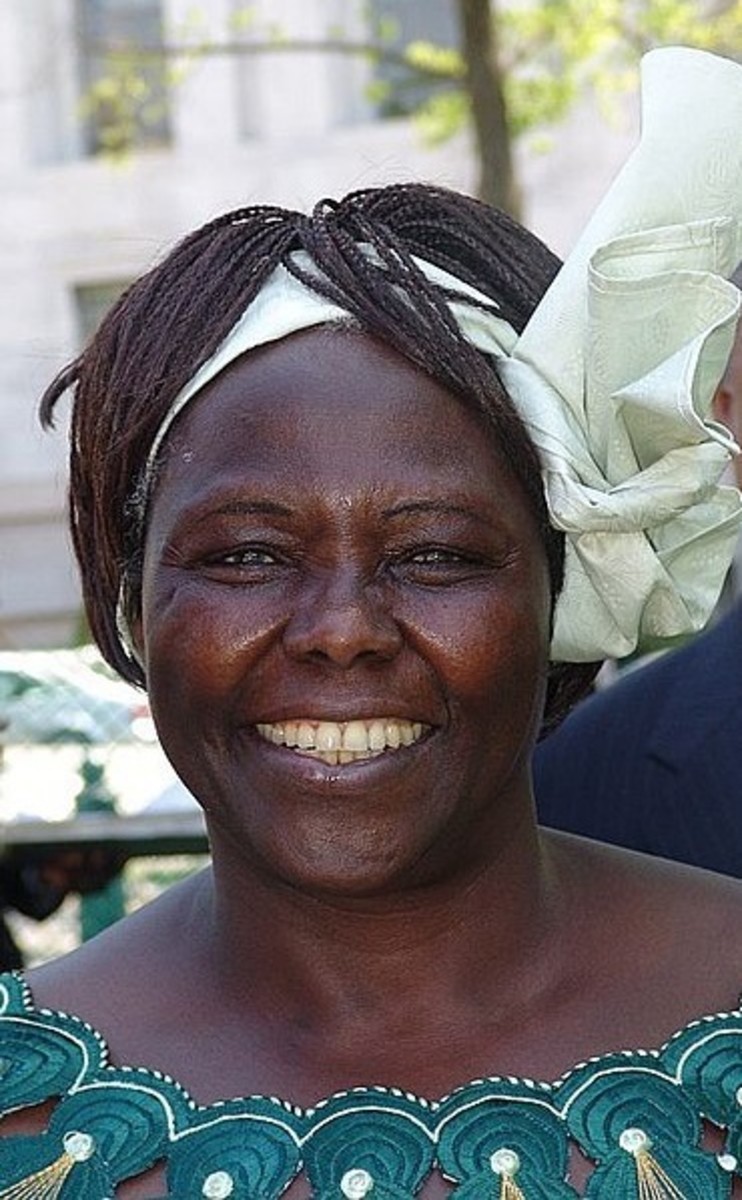How to Teach Your Kids Manners
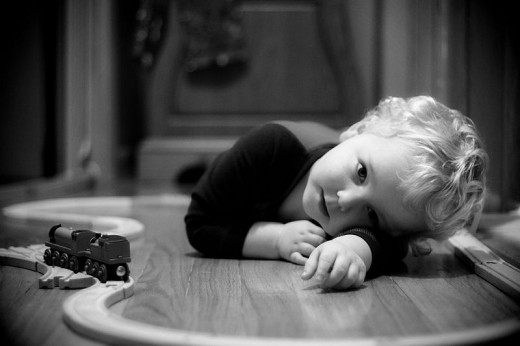
The other day I was walking into the gym. My hands were full and it was raining. A teenage boy in front of me kindly held the door open for his mother. She had taught him well. Unfortunately, after she walked through the door, he released it and it slammed on me. Maybe he didn't have a full grasp on the entire concept of manners, after all. As parents, we hope that our children display good manners when in public and at home. Having good manners is a life skill that will help children to make friends in school and get along with adults. Later, good manners will help to impress a girl or boy they are dating and, as an adult, earn a job.
When to Teach Kids Proper Manners
It's never to soon to begin teaching manners to children. As soon as they begin talking, they can begin learning. The best way to teach your kids manners is to use good manners yourself. It also works better if you use positive reinforcement rather than negative. "Adults who nag children all the time about their manners can really turn a positive into a negative," writes Lettitia Baldrige in her book More Than Manners: Raising Today's Kids to Have Kind Manners & Good Hearts. That makes sense. Good manners is really about being kind and considerate to others. Children mirror their parents. If the parent is acting negatively by nagging, the child will imitate the negative behavior or, worse, believe the negative words said about them are true and just decide to throw in the towel.
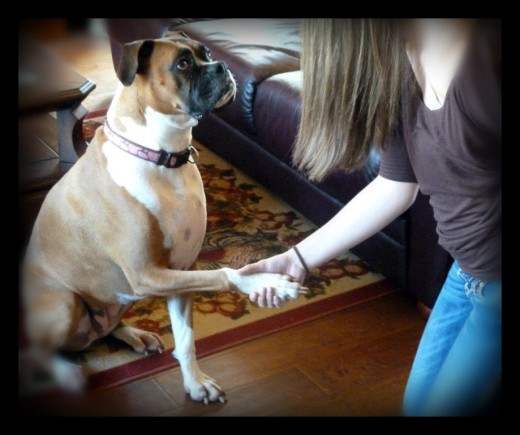
Manners as defined by dictionary.com
a. the prevailing customs, ways of living, and habits of a people, class, period, etc.; mores: The novels of Jane Austen are concerned with the manners of her time.
b. ways of behaving with reference to polite standards; social comportment: That child has good manners.
Manners for young children
When children are very young they can begin with the basics. "Please" and "thank you" are easy words to say and an excellent way to begin proper etiquette. You can teach your child these skills by using the words yourself. If you want little Timmy to put his block in the bin, ask him nicely. If he asks you for something in a rude manner, physically bring yourself down to his level, look him in the eye, rephrase it for him and allow him to repeat you. Praise him for his good manners. You can even think of a reward system for continued use of good etiquette. Here are some manners a young child can learn:
- Saying "please".
- Saying "thank you".
- Beginning a request with "may I" or "can I".
- Using words like "excuse me" or "pardon".
- Say "hello" and "goodbye" to others, making sure to make eye contact.
- Shaking hands, firmly. (You're never too young to start learning!)
- Be respectful to adults.
- Chew with your mouth closed and avoid talking until you have swallowed your food.
- Use good table manners. Wait until everyone is served before eating and stay seated until everyone is finished.
- Be a gracious winner and loser when playing games or sports.
These are just a few things a young child can begin learning. It's important to remember that, especially at very young ages, children will copy their parents' behavior. If you use proper manners, your child will learn to do the same. On the other hand, if you chew with your mouth full and are disrespectful to others, particularly your spouse, your children will mimic that behavior. It's essential for them to begin working on manners at an early age because, not only is it a good time for them to form good habits, but young kids these days are often put in situations where having good manners is important. Whether it's school, a playdate, a social gathering or a sporting event, children need to know how to handle themselves properly. Does that mean they will have the manners of a full-grown adult by 6 years old? Of course not. But a young child making an attempt at proper etiquette will make a good impression.
Ways parents can teach kids manners
♦ Set a good example.
♦ Use positive reinforcement.
♦ Pleasantly give them an opportunity to "try again" using manners.
♦ Create subtle cues in order to not embarrass them publicly.
♦ Read stories about manners to young children.
♦ Enroll them in an athletic program where etiquette is expected.
♦ Be consistent.

Manners for Teens
Many teens will question why they need to practice good etiquette when nobody else around them does. The fact is, when you are a teenager, you are on the cusp of adulthood and it's more important than ever to practice good habits. It doesn't mean, however, that they need to speak like adults. It might be awkward to greet a friend in an overly formal way: "Hello, Amanda. I'm pleased to see you. How are you, today?" Just as polite: "Hi, Amanda! How are you?"
Teen-aged boys will have a lot more success in the dating world if they use good manners. Opening a door for a girl, pulling out her chair, listening to her as she speaks and making eye contact are all things that make a girl feel respected and appreciated. Teen-aged girls are not off the hook. They should thank a person for offering to open a door or pulling out a chair. Eye contact is crucial as are speaking politely and using proper table manners. If she get's asked to the prom, you don't want her to be wearing a beautiful and expensive dress while leaning on the dinner table with her elbows while chomping loudly on her meal with her mouth open. When you are polite to others, you are letting them know that you respect them. Respect breeds respect. A lot of teenagers think that it will make them appear weak if they use polite manners. Actually, it's the opposite. It takes a strong person to do what they know is right regardless of what is happening around them. Here are some manners that teenagers can practice:
Manners as defined by urbandictionary.com
Something that costs nothing, but most of the population seems to have an aversion to.
- Proper greeting. "Hello, Sam. How are you?"
- Proper response to a greeting. "Hi, Tiffany. I'm great, how are you?"
- No swearing, especially in public places.
- Use good table etiquette. Wait until everyone has been served before eating, elbows off the table, hold fork and knife properly, set eating utensils down between bites, napkin on the lap, and wait until everyone is finished before leaving the table are just some of the basic manners that should be used.
- Respect adults.
- Don't interrupt conversations. Wait for a break before speaking.
- Give a firm handshake, make eye contact.
- Open doors for others and offer your seat if there are none remaining.
- Clean up after yourself.
- Use good manners when speaking on the phone.
- Listen to others and think before speaking.
- Treat others how you want to be treated.
- Sit and stand up straight.
- Say "please" and "thank you".
- Apologize immediately if you have offended someone. Accept other's apologies readily.
- Properly introduce people to each other. "Emily this is Jon, Jon this is Emily."
The big question is: How do you teach a teenager to use good manners? You teach them the same way as when they were younger. Parents always need to set a good example. Also, if you treat your child with respect, they will learn to treat you and others with respect. I can't tell you how many times I've seen people speak to their teenagers disrespectfully. "Get over here." "Knock that off." "Clean up your room." It's easy to fall into the habit but just as easy to start speaking more respectfully to our teens. "Jake, could you please come here." "Please stop doing that." "Clean up your room, please." Being polite to someone shows them you respect them. You need to give respect in order to earn respect.
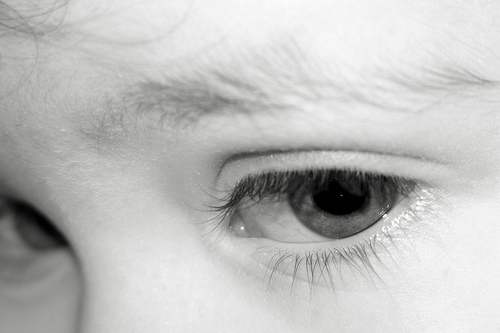
Little Eyes Upon You
There are little eyes upon you
and they're watching night and day.
There are little ears that quickly
take in every word you say.
There are little hands all eager
to do anything you do;
And a little girl who's dreaming
of the day she'll be like you.
You're the little angel's idol,
you're the wisest of the wise.
In her little mind about you
no suspicions ever rise.
She believes in you devoutly,
holds all you say and do;
She will say and do, in your way
when she's grown up just like you.
There's a wide-eyed little girl
who believes you're always right;
and her eyes are always opened,
and she watches day and night.
You are setting an example
every day in all you do;
For the little girl who's waiting
to grow up to be like you.
Author Unknown
What people are saying about kids and manners.
When I decided to write on this topic, I spoke to several different people. What I found out is, most folks strongly feel that teaching kids manners is important. Here are some tips given by various friends and acquaintances:
- "I think it's important for kids to look me in the eye and give a firm handshake," says Kevin West. Kevin, a successful executive, is 6'-7" so, that may be easier said than done. A jovial personality, Kevin also has a good way to ensure that happens. "If a child gives me a limp handshake with no eye contact I smile and say, 'Let's try that again. It wasn't quite right.'" It's funny to me because the simple act of giving a proper handshake came up several times when I spoke with people. A handshake should not be so hard that it crushes the bones in the hand but also not like a soggy noodle. A good, firm handshake conveys confidence and is a skill that will be used throughout life.
- Robin Wong, a parent on my daughter's volleyball team, shows up to practice in a martial arts uniform. She told me how martial arts classes are a great place for kids to learn proper manners because it is a very structured, disciplined environment. "In a martial arts class, the students are required to say, 'Yes, ma'am', 'No, ma'am' and 'Excuse me sir' with a respectful tone. Enrolling kids in athletic programs helps to teach discipline and provides an opportunity to work on manners. Before every volleyball match, my daughter's team walks over to the net and shakes the hand of the other team. They do the same after the game. This teaches them to be respectful of others even when competing against them--a skill they will definitely use throughout their lives.
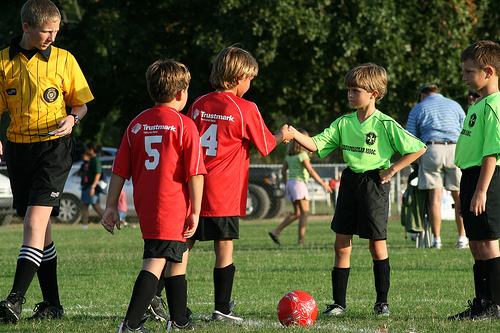
- I asked the question on my Facebook wall and got many of the same response: Consistency. Ron, a friend from high school, said it well, "Consistency. Period. Expect manners, they will model your behavior as well, so act accordingly." The role of parents is crucial to their children learning manners. Some parents expect the school to do everything for them. The school should provide an education and fulfill the roles of parents by instructing them to have proper manners. It's true that schools will try to instill good habits in children but it is all for naught if the parents do not do their part in the home.
- My brother, Dave, works with young kids and teens daily in his career as a personal fitness instructor. He says parents should lead by example. I guess he knows what he's talking about. How many people would go to an out of shape fitness trainer? He keeps himself extremely fit and that makes him credible as a trainer. The same applies to parents and adults. You aren't a credible source for proper etiquette if you don't model the behavior yourself.
- A mother of two, Dana, had a concise way of reminding her kids to chew with their mouths closed. If she spots them chomping food with an open mouth, she just makes a hand signal by closing her fingers over each other. It's a quiet and respectful reminder to her children that won't embarrass them publicly.
Manners defined in "How Rude" by Alex J. Packer, Ph.D.
Manners are the customs and traditions of a society that govern how people treat one another and behave in social situations. They maintain order, promote societal values, and foster positive human interactions.
You are your child's best example.
The most important thing to know about teaching your children manners is that you are the most influential role model in your child's life. Nobody can teach your child or be an example for your child better than you. The poem is true: there are little eyes upon you.
What is your opinion?
Do you think kids, today, have good manners?
Citations
Baldrige, Letitia. More Than Manners! Raising Toda'ys Kids to Have Kind Manners & Good Hearts. New York: Rawson Associates, 1997. Print.
Packer, Ph.D., Alex, J. How Rude! The Teenagers' Guide to Good Manners, Proper Behavior and Not Grossing People Out. Free Spirit Publishing, 1997. eBook.
Unknown, . "Little Eyes Upon You." The Labor of Love. Earth's Magic Inc., n. d. Web. 25 May. 2012.
This article is copyright of Denise Mai, May 25, 2012, all rights reserved.
Follow me on Twitter! @denise_mai



